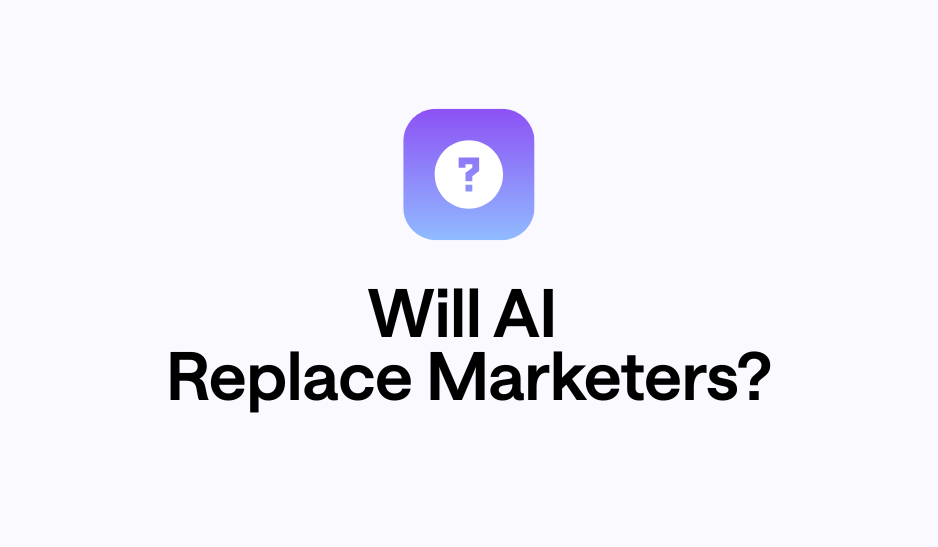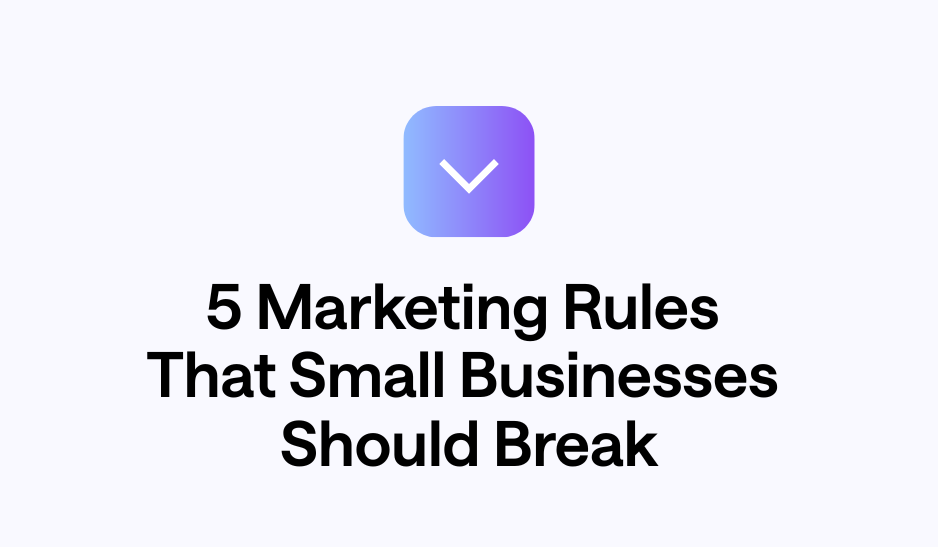5 Quick Market Research Templates For Busy Marketers
Most marketers know they should be doing more market research. They also know their calendar rarely agrees. Between campaign deadlines, reporting, and endless internal requests, digging into data often gets pushed to “next week.” Then next week becomes next quarter.
You want insights you can trust, but you need them fast. You don’t have the time or budget for lengthy studies, and you definitely don’t have the appetite for another bloated spreadsheet project.
The good news is you can get meaningful answers in minutes if you follow the right structure. What most people lack is not the willingness to research but simple, reusable templates that focus your attention on what matters.
These templates reflect a modern, data-grounded approach. They blend real customer signals, public datasets, and clear decision frameworks so you can move quickly without sacrificing rigor.
1. The Customer Signal Scan
A fast template for identifying who is already paying attention and why.
The Common Approach
Most marketers guess who their audience is based on vibes. They build campaigns around loose personas like “working moms,” “tech early adopters,” or “millennials who value convenience.” These labels feel familiar, which is why people gravitate toward them. But they are rarely specific enough to guide strategy.
Others try to compensate by running long surveys or scraping unstructured feedback. They end up with pages of anecdotes that are hard to translate into decisions.
Why That Fails
If your audience definitions are vague, your messaging will be vague. You overspend on channels that do not reach the right people. You optimize for clicks instead of customers. You manually test endless creative variations because you never identified the underlying motivators in the first place.
A Better, Data-Driven Way: The Template
Spend 30 minutes collecting only three types of signals:
-
Behavioral signals
Look at your highest intent actions. Who signed up? Who purchased? Who clicked your strongest offers? Segment them by geography, age range, and household or business attributes using public data when possible. -
Contextual signals
Identify where these users came from. Which channels or search terms generated the most qualified leads? This tells you where similar people naturally gather. -
Motivational signals
Review short form feedback from reviews, testimonials, chat transcripts, or CRM notes. Extract five recurring motivations or frustrations.
Combine these into a one-page “signal sketch” persona. You will be surprised how fast a coherent profile emerges when you look at real behavior instead of stereotypes.
2. The Competitor Positioning Snapshot
A simple framework to see how your market is actually split.
The Common Approach
Competitive analysis often turns into a giant list of feature comparisons. Teams highlight dozens of bullet points, half of which customers do not care about. Or they fixate on the loudest competitor rather than mapping the entire category.
Why That Fails
Feature lists rarely show you the real opportunities. They do not reveal how customers perceive value. They ignore economic or demographic trends shaping each competitor’s customer base. Worst of all, they make it hard to decide where your product can stand out.
A Better, Data-Driven Way: The Template
In 30 minutes, you can create a clean snapshot by answering four questions for your top three to five competitors.
-
Who do they serve most heavily?
Use publicly available demographic and firmographic data tied to their traffic sources or customer base. Look for patterns: age ranges, income brackets, industries, zip codes, or education levels. -
What problem do they claim to solve first?
Pull this directly from their homepage headline and core messaging. -
What emotional pitch do they rely on?
Do they promise simplicity, speed, affordability, expertise, or something else? Customers buy based on emotion before logic, so this matters. -
What gap does this create in the market?
Look for underserved motivations or audiences. A gap is where two or more competitors reinforce the same narrative and leave another narrative untouched.
Put these answers into a simple two-axis matrix. Instead of features, look at customer type on one axis and dominant motivation on the other. Your opportunity usually becomes obvious.
3. The Rapid Demand Trend Check
A quick method to confirm whether your idea or campaign is trending upward or downward.
The Common Approach
People chase trends based on social media chatter or industry newsletters. Others trust their team’s intuition. Some skim search volume data without context. All of this leads to confusing signals.
Why That Fails
You can misread noise as demand. You can invest heavily in a trend that is already peaking. Or you can overlook segments where demand is steady but quiet. Without grounding your trend check in real population-level behavior, you risk misallocating time and budget.
A Better, Data-Driven Way: The Template
Block 30 minutes and answer these five prompts:
-
Search momentum
Look at 18 to 36 months of search trends for three to five core keywords. Do not focus on exact numbers. Look for slope direction and volatility. -
Geographic hot spots
Identify where interest is growing or declining based on search data linked to specific regions. Pair this with Census data to understand demographic makeup. -
Population shifts
Check whether the regions with rising interest are seeing growth in the customer attributes most relevant to your product. For example, increases in young families, remote workers, retirees, or small businesses. -
Economic context
Use public datasets to check income levels, industry growth, or business formation rates tied to your audience. These often explain why certain trends accelerate. -
Competitive acceleration
Identify if emerging competitors have gained visibility recently. A fast rise could validate demand, or it could signal a short-lived wave.
Summarize your findings with a “trend health score” from 1 to 5. You now have a grounded read on whether your idea is rising, stable, or fading.
4. The Message Clarity Test
A thirty-minute gut check to see if your messaging matches what customers care about now.
The Common Approach
Teams fall in love with their own messaging. They rely on internal opinions or outdated positioning work. They polish copy until it sounds clever but does not connect to the customer’s lived experience.
Others guess what language resonates based on small A/B tests or anecdotal feedback.
Why That Fails
Without grounding your message in real customer language and motivations, you risk missing the mark. Clever lines do not convert if the content does not connect to what your audience values in their current economic or emotional state. Misaligned messaging increases acquisition costs and lowers retention.
A Better, Data-Driven Way: The Template
You only need three sources and 30 minutes.
-
Customer language sampling
Collect 25 to 40 short statements from reviews, forums, social threads, or sales notes. Highlight repeated words or phrases that customers use when explaining their needs. -
Motivation alignment
Compare these phrases to your current headline and subhead. Score your message from 1 to 5 on how well it reflects customer motivations rather than internal product framing. -
Barrier identification
Identify the three most common objections or anxieties customers express. See if your messaging addresses them directly or indirectly.
Your output is a one-page clarity summary with simple instructions. For example: “Increase focus on saving time for first-time users, reduce jargon, address fear of wasted money, add a concrete outcome in the headline.” This is the fastest way to ensure your marketing matches the market.
5. The Opportunity Scan
A repeatable thirty-minute process to discover new segments or angles hiding in plain sight.
The Common Approach
When teams look for new opportunities, they usually brainstorm. They list ideas on a whiteboard, rank them with sticky dots, and chase the winning concept. Others search for inspiration in competitor features or emerging product categories.
Why That Fails
Brainstorming rewards ideas that sound exciting, not ideas grounded in real demand. You miss entire customer groups simply because no one thought to look at them. You chase shiny ideas instead of durable opportunities.
A Better, Data-Driven Way: The Template
This template helps you identify real opportunities based on demographic and behavioral patterns rather than imagination.
-
List your top five converting customer groups
Use data from your CRM, transactions, or signups. If you do not know exact numbers, pick the segments you believe convert best. -
Profile each group using public data
Map age, household income, education, family structure, and location. For B2B, the map industry, company size, and revenue. Look for attributes that repeat. -
Identify adjacent groups
For each strong segment, list adjacent populations with similar attributes but different needs. For example, if you serve parents with young kids, adjacent groups might include new homeowners, multigenerational families, or households with aging parents. -
Check demand viability
Use quick search trend checks, public data, or customer signal scans from earlier templates to see if these adjacent groups show signs of active demand. -
Prioritize two opportunities
Choose the ones that combine reachable demand, clear messaging angles, and aligned motivations.
This scan turns random brainstorming into grounded exploration. Instead of asking “What could we try?” you ask “Which adjacent population shows growing, measurable demand right now?” The difference in clarity is enormous.
Pulling It All Together
These five templates work fast because they avoid gimmicks and assumptions. They rely on public data, real customer signals, and structured frameworks that help you make decisions without overthinking. You can run them before launching a campaign, evaluating a new product line, refining messaging, or preparing a quarterly strategy review.
The real unlock is not the templates themselves. It is the mindset behind them. Effective market research does not require giant studies or expensive consultants. It requires a practical workflow that brings structure to your intuition and grounds your decisions in reality. When you operate this way, strategy becomes accessible instead of mysterious, repeatable instead of chaotic.
If you want to explore a simpler, more data-grounded approach to marketing strategy, you can learn more through our platform by clicking here.

.png)
